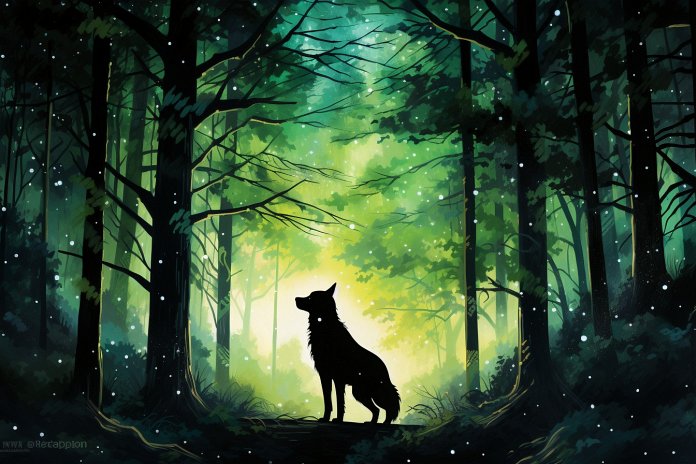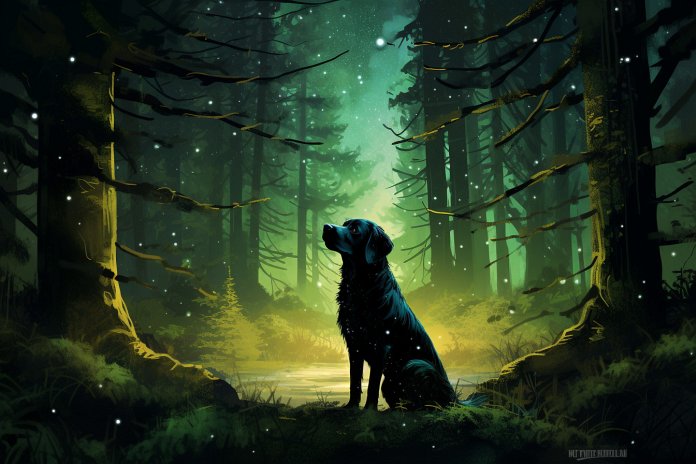
When it comes to stellar night-vision, we often think of felines, who are known for being able to see exceptionally well at night, which happens to be when many of them hunt prey. Dogs, however, also have pretty good night vision. It has been estimated that dogs can see five times better than humans in the dark.
Signs That Dogs Can See at Night
You may have noticed that your dog doesn’t appear to have any problems seeing at night. It is surprising that creatures that can’t see the full color spectrum like humans can, could see better at night than we can, but it is true. Since your dog can obviously see at night, you may now realize that there were signs that you missed.
Some of the most obvious signs include your dog not running into things in the dark and your dog noticing movements even without much light. At night, your dog can still make their way through your backyard or home without running into things and injuring themselves, which is the biggest indication that they have little problem seeing without lights.
Other indications that your dog can see at night stem from your dog’s body language. Your dog will exhibit all the same signs they do when they see something at night as they would during the daytime. If your dog is prone to barking at cars as they pass in front of your house during the day, your dog will continue to bark at cars even at night. Does your dog stare at squirrels and other small animals? You may catch them staring at the same animals at night.
Body Language
Your dog will exhibit all the same signs it does when it sees something at night as it would during the daytime. If your dog is prone to barking at cars as they pass in front of your house during the day, your dog will continue to bark at cars even at night. Does your dog stare at squirrels and other small animals? You may catch them staring at the same animals at night. Here are a few body language cues that indicate that your dog can see in the dark:
– Staring
– Alert
– Barking
– Wag Tail
Other Signs
Other signs that your dog can see at night include:
– Not Running Into Things
– Acting No Differently
– Chasing Animals At Night
– Finding Objects In The Dark
History of Dogs Being Able to See at Night
Dogs weren’t always domesticated, and before they became house pets, it was very important that dogs could see at night. When dogs were wild, they needed to be able to defend themselves against predators regardless of the time of day. Bears, wolves, and coyotes all would’ve been predators that dogs needed to look out for. If a dog was unable to see at night, it would risk being injured or even killed by these larger predators.
While dogs don’t have perfect night vision, they needed to be able to see well enough to navigate through the woods or in their dens when it was very dark.
Being able to see at night is still important for dogs that live near the woods or outdoors full time. This trait can prevent them from being harmed by other animals in the darkness. It also allows them to play and walk with you no matter what time of day it is.
Science Behind Dogs Being Able to See at Night
Unsurprisingly, dogs’ eyes are made differently than those of humans. Dogs are better able to see at night due to the composition of their eyes. First, dogs have pupils that are much larger than the pupils of humans. In fact, many animals have larger pupils than humans, including cats. The larger the pupil, the more light that can enter into the retinas. Inside the retinas, there are tiny cells called rods. Rods are light sensitive and help your dog see with very little light. Since dogs have more rods in their eyes than humans, they can see better in the dark than we can.
A dog’s eye also contains something called the tapetum lucidum, which isn’t present in the human eye. This is part of the dog’s eye that reflects light back into the retina like a mirror. The tapetum lucidum gives your dog’s eye a second chance to register the small amount of light, which gives them better vision at night. You’ve probably also noticed that your dog’s eyes glow in the dark, the tapetum lucidum is also responsible for that phenomenon.
Another thing that helps your dog see at night is its Flicker Fusion Frequency, or FFF. The Flicker Fusion Frequency is the frequency at which your dog no longer sees lights as flickering, but instead as a constant source of light. The higher the FFF, the better the creature can see in the dark. Since dogs have a higher FFF than humans, they have the ability to see better in the dark.
Dealing With Your Dog Being Able to See at Night
Even though dogs can see better than humans at night, that doesn’t mean they have better sight than humans. In the daytime, your dog is extremely nearsighted and is unable to see shades of red and green. A dog’s vision is also much less clear than a human’s.
At night, however, dogs still struggle with a couple of these issues. Mainly, dogs still can’t see colors very clearly, and at night, it can be even more difficult for your dog to make out similarly colored objects or objects that are in colors that they can’t see. If you want to play with your dog at night, be sure to use a glow-in-the-dark toy or play inside with the lights on.
When you are letting your dog outside to use the restroom or play at night, you will need to do your best to keep them safe. If you have lights, turn them on. If not, only let your dog out in a fenced in yard or on a leash. While it may not be likely that another animal tries to attack your dog at night, it is better to be safe than sorry. Your pet may also become spooked by something and try to run off. At night, it will be much harder for you to find your dog in the dark.
If you want to take your dog on a walk during dark hours, you should also be more cautious. It will be difficult for drivers to see you and your dog, so consider a glowing collar or leash to make your dog more visible to others that are out and about. While you should always keep your dog leashed during walks, it is even more important in the dark, as an oncoming vehicle may not be able to see your dog until it is too late.
“Even in the dark, man’s best friend sees the light.”

Tips & Things to Know
1️⃣ Dogs have better night vision than humans: Dogs can see five times better than humans in the dark. They can easily navigate through the dark without running into things or injuring themselves.
2️⃣ Signs that indicate your dog can see at night: Dogs exhibit certain body language cues such as staring, being alert, barking, and wagging their tail when they see something at night. They also show similar behaviors as they do during the daytime, like chasing animals and finding objects in the dark.
3️⃣ Safety precautions for dogs at night: While dogs have better night vision, they still struggle with certain vision limitations. Use glow-in-the-dark toys or play inside with lights on when playing with your dog in the dark. Keep your dog safe by turning on lights in the backyard or using a leash in dark areas. Consider using a glowing collar or leash during nighttime walks to make your dog more visible to others.
Frequently Asked Questions, Answered ✅
1. How well can dogs see at night compared to humans?
– Dogs can see five times better than humans in the dark.
2. What are some signs that dogs can see at night?
– Dogs can navigate without running into things, notice movements in low light, and exhibit their usual body language cues when they see something.
3. Why is it important for dogs to have night vision?
– Dogs needed to be able to defend themselves against predators when they were wild, and being able to see at night is still important for their safety and ability to play and walk with their owners.
4. What makes dogs able to see better at night?
– Dogs have larger pupils that allow more light to enter their retinas, more rods in their eyes for better low-light vision, and a tapetum lucidum that reflects light back into the retina.
5. What precautions should be taken when dogs are out at night?
– Use lights to increase visibility, keep dogs in a fenced yard or on a leash, and consider using glow-in-the-dark toys or accessories to make dogs more visible to others.